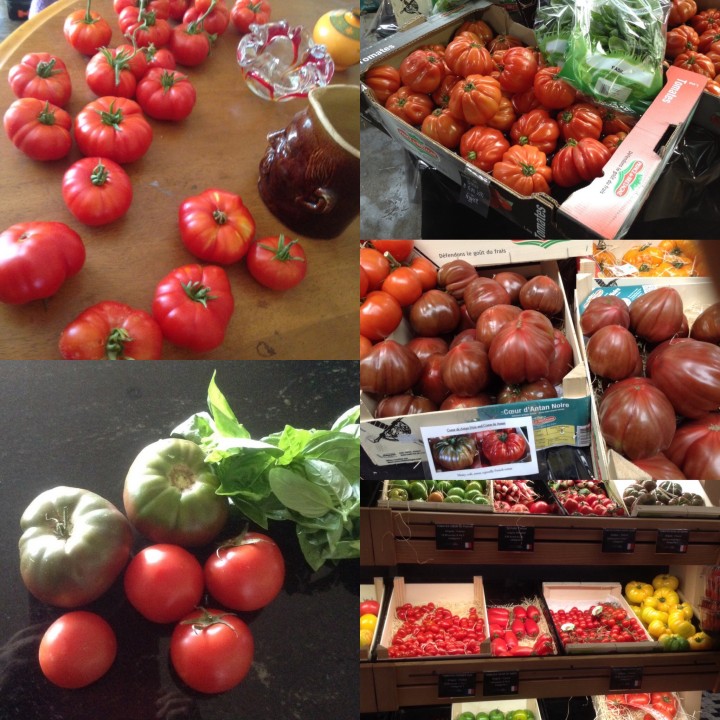It is summer and time to celebrate a good tomato.

I like making tomato salads like my parents used to make – with tomatoes, celery, fresh onion, basil or oregano, salt and good extra virgin olive oil.
And as the mood takes me, I sometimes like to accompany a tomato salad with one of the following simple dairy trimmings, like: bocconcini or mozzarella, treccia, ricotta, straciatella , burrata or marinaded feta or a panna cotta made with feta or gorgonzola.

Including the protein makes an excellent starter …..or as my parents did – eat a tomato salad with ricotta or bocconcini for lunch almost every day of summer.
I was in Gippsland yesterday and visited Bassine; they make a range of cheeses on the premises.

I have been there before and have purchased various cheeses, but yesterday I came home with some quark and thought that would experiment and make a savoury coeur à la crème.

Coeur à la crème is usually served with berries but I thought that I could accompany my savoury coeur à la crème with a tomato salad. Alternatively roasted (or charred) peppers or slow roasted baby tomatoes would also be great… or fried red peppers (peperonata) or lightly sautéed zucchini and mint could be terrific…I could go on.

You need muslin and a mold or container that allows drainage. I used a traditional ceramic, heart shape dish for making a coeur à la crème, but any container that is perforated with holes to drain off the excess moisture of the cheese or a colander can be used as an alternative.

I used the following ingredients:
250 gm each quark, 1 cup of Greek yogurt, 100g of marinaded feta, fresh thyme leaves ground pink peppercorns, 1 peeled clove of garlic, ½ cup pf milk, ½ cup good quality olive oil.

In a small sauce pan warm the milk over low heat. Remove from heat and let steep for 30 minutes and then strain out.
Combine cheeses and yogurt – you want the mixture fairly smooth so use a food processor or work it with a spoon.

Add the thyme, ground pink peppercorns and infused milk.

Line the mould with muslin (enough to cover the mold) and sprinkle with olive oil.

Put cheese mixture into the mold, sprinkle with more olive oil and cover it with the left over muslin.

Place the mold into a container or tray to catch the whey (liquid that drains away). Stand overnight in the fridge.
Carefully turn the mold out onto a serving plate.

Serve with a tomato salad or anything thing else that catches your fancy.
Next time I make a ‘Coeur,’ I may try ricotta and herbs – no feta, no yogurt.

Recipes of summer vegetables:
PEPERONATA – PIPIRONATA (Sicilian) Braised peppers
FRIED ZUCCHINI – ZUCCHINE FRITTE (Zucchini are called CUCUZZEDDI in Sicilian)
PUMARORU CA CIPUDDA (Tomatoes with onions). INSALATA DI POMODORO (Tomato salad)
PEPPERS WITH BREADCRUMBS- PIPI CA MUDDICA – PEPERONI CON LA MOLLICA
ANTIPASTO – GRILLED SUMMER VEGETABLES AND A SCOOP OF SALADS
BURRATA, MOZARELLA, STRACCIATELLA
Coeur a la Crème made with Labneh































